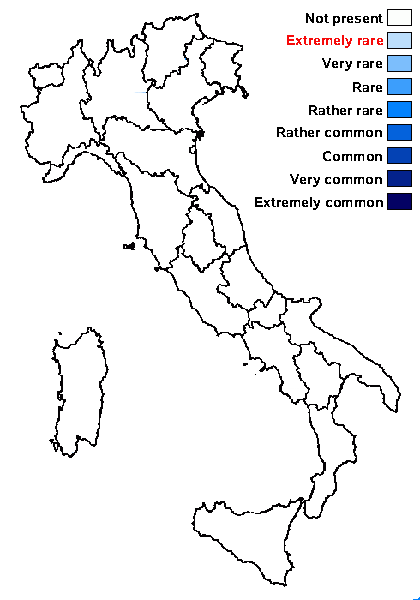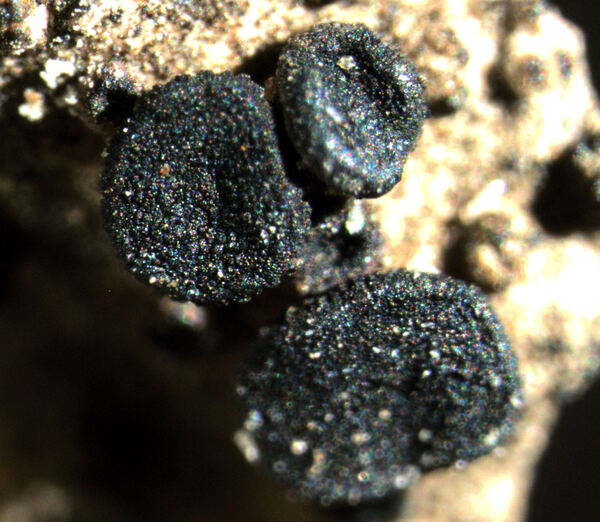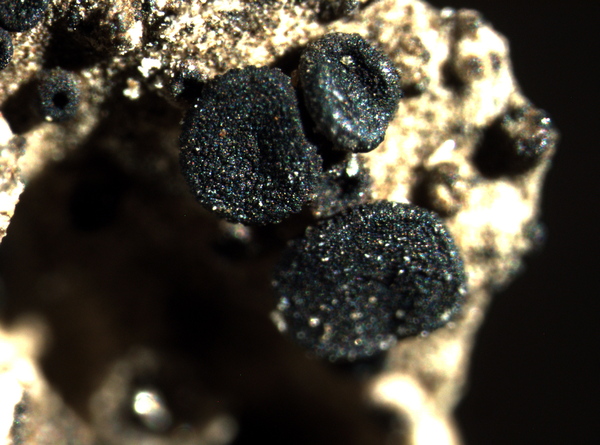Umbilicaria pallens Poelt
in Hasenhüttl & Poelt, Ber. deutsche bot. Ges., 91, 2-3: 282, 1978
Synonyms:
Distribution:
Description: Thallus foliose-umbilicate, mono- or more rarely polyphyllous, 2-7 cm in diam., sometimes perforated. Upper surface pale grey, except the central parts, which are whitish, furfuraceous-squamulose, radially sulcate around the umbilicus. Lower surface erhizinate, without thalloconidia, pale brown, the marginal parts whitish-pruinose. Apothecia frequent, black, leiodisc, constricted at base to subpedicellate, with a smooth disc. Asci 8-spored, elongate-clavate, thick-walled, with an amyloid apical dome, Umbilicaria-type. Ascospores 1-celled, hyaline, narrowly ellipsoid, 10-20 x 3-7 µm. Photobiont chlorococcoid. Spot tests: K-, C+ red, KC+ red, P-. Chemistry: medulla with gyrophoric acid. Note: a silicicolous species resembling U. subglabra, but lacking thalloconidia and lower surface therefore pale greyish, regularly bearing apothecia with smooth discs; widespread in the mountains of SW Europe, with several scattered records from the Alps, all outside Italian territory. To be looked for in the Alps.
Growth form: Foliose, umbilicate
Substrata: rocks
Photobiont: green algae other than Trentepohlia
Reproductive strategy: mainly sexual

Predictive model
Growth form: Foliose, umbilicate
Substrata: rocks
Photobiont: green algae other than Trentepohlia
Reproductive strategy: mainly sexual

Predictive model
 Index Fungorum
Index Fungorum
 GBIF
GBIF




